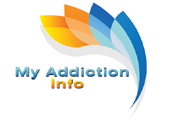
What Is Heroin?
What's In This Article?
An opioid that is made from morphine, heroin can be smoked, injected, or smoked. It is a natural substance that is taken from poppy plant seed pods that are grown in Colombia, Mexico, and parts of Asia. Usually, heroin is a white or brown powder. It can, however, be in the form of a black sticky substance, which is called black tar heroin. Heroin is often referred to as hell dust, smack, or horse. Some people do what is called speedballing, where they mix heroin and crack cocaine.
The Effects of Heroin
Entering the brain quickly, heroin binds to the opioid receptors in the cells in many areas. Among those cells are those that play a role in pleasure, pain, sleeping, breathing, and heart rate control. There are some prescription opioids that have similar effects as heroin. Many heroin users started by misusing opioids.
The Effects Of Heroin Use
When people use heroin, they often say they have a rush, which is a pleasure surge or euphoric feeling. The drug is accompanied by several short-term effects, such as:
- Vomiting and nausea
- Cloudy mentality
- Back and forth motions
- Warm flushing of skin
- Dry mouth
- Arms and legs feel heavy
There are many long-term effects from heroin use as well. These include:
- Infection of the heart valves and lining
- Stomach cramps and constipation
- Kidney and liver disease
- Mental disorders
- Lung complications
- Insomnia
- People who snort or sniff it might have damaged tissue in the nose
- Those who inject it might have collapsed veins
- Women might have irregular menstrual cycles
- Men might have sexual dysfunction
Additives, such as starch, powdered milk, or sugar in the drug can clog arteries. Clogged arteries could cause permanent damage to organs, especially the brain, kidneys or lungs. Sharing needles or impaired judgment from use of heroin can lead to risky behavior and increase the odds of getting hepatitis or HIV.
Overdose Risk
When someone uses heroin in amounts that effect life-threatening effects or leads to death, it is considered an overdose. A heroin overdose leads to stopped or slowed breathing. This can cause hypoxia, which is decreased oxygen flow to the brain.
Hypoxia could have short-term or long-term effects on the nervous system and could lead to permanent brain damage or coma. When given right away, naloxone can treat an opioid overdose. It binds rapidly to the opioid receptors and blocks the effects of the drugs. Sometimes it might take multiple doses to get the person breathing again.
Anyone who overdoses must be taken to the emergency room as soon as possible. Naloxone is available as a nasal spray or in an injectable form. Many first responders now have this drug available to help prevent death from overdoses.
Major Risks From Heroin
Heroin, an illegal substance, is highly addictive. Regularly using the drug can lead to the individual becoming tolerant and the user needing more and more of the drug to get the same effect. As the doses increase, the body gains dependency for heroin.
If a user who is dependent stops the drug, he or she will have severe symptoms of withdrawal. Withdrawal symptoms might include vomiting, diarrhea, bone and muscle pain, cold flashes, goose bumps, and restlessness.
Heroin users are much more likely to suffer serious health problems, such as overdose death, miscarriages, and heart problems.
Heroin Use
According to the 2016 National Survey on Drug Use and Health, some 948,000 people in the United States reported using heroin during the last year. This figure has increased steadily since 2007. The greatest increases are in young adults ranging from 18 to 25.
First time users have increased as well with 170,000 people starting use of the drug in 2016. The number of new users in 2016 was almost double the number of first-time users back in 2006. Heroin use for those ages 12 to 17 has decreased, with users in grades 8, 10, and 12 at the lowest numbers since 1991, which is less than 1% for each of those grade levels.
Heroin Dependence
With the increase of heroin users, more people are suffering negative health effects from ongoing use of the drug. The criteria for dependence of the drug listed in the Diagnostic and Statistical Manual of Mental Disorders, 4th Edition saw an increased number of people meeting the criteria, with 214,000 meeting the criteria in 2002 to 626,000 in 2016.
The 5th Edition no longer separates substance abuse from substance dependence but does provide criteria ranging from mild to severe for opioid use disorder, dependent on the individual’s symptoms.

